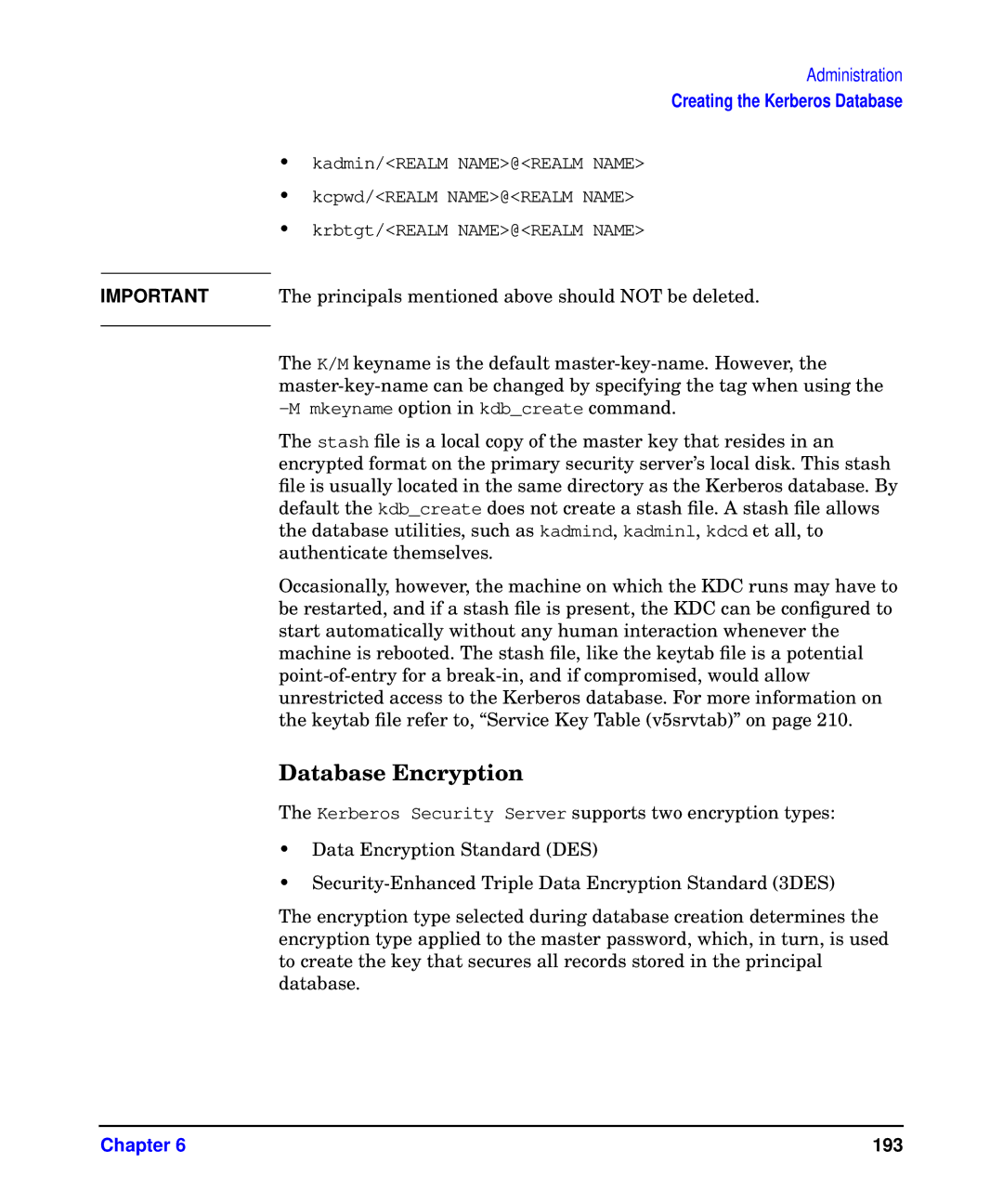
Administration
Creating the Kerberos Database
•kadmin/<REALM NAME>@<REALM NAME>
•kcpwd/<REALM NAME>@<REALM NAME>
•krbtgt/<REALM NAME>@<REALM NAME>
IMPORTANT The principals mentioned above should NOT be deleted.
The K/M keyname is the default
The stash file is a local copy of the master key that resides in an encrypted format on the primary security server’s local disk. This stash file is usually located in the same directory as the Kerberos database. By default the kdb_create does not create a stash file. A stash file allows the database utilities, such as kadmind, kadminl, kdcd et all, to authenticate themselves.
Occasionally, however, the machine on which the KDC runs may have to be restarted, and if a stash file is present, the KDC can be configured to start automatically without any human interaction whenever the machine is rebooted. The stash file, like the keytab file is a potential
Database Encryption
The Kerberos Security Server supports two encryption types:
•Data Encryption Standard (DES)
•
The encryption type selected during database creation determines the encryption type applied to the master password, which, in turn, is used to create the key that secures all records stored in the principal database.
Chapter 6 | 193 |
